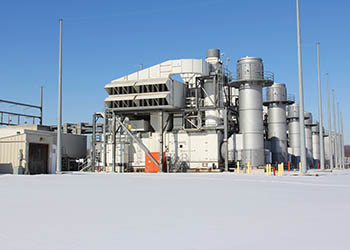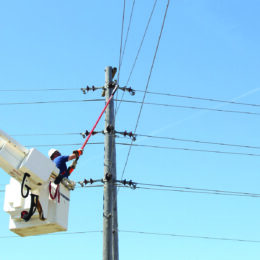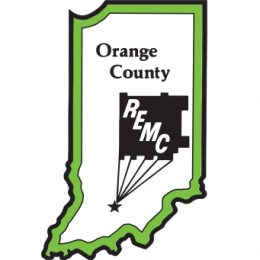 How natural gas power plants work
How natural gas power plants work
Natural gas facilities in use by Hoosier Energy add to system reliability, environmental stewardship and fuel diversity.
Gas turbines, as shown above, operate by drawing ambient air through intake structures. Air is then compressed and mixed with natural gas and ignited in a combustion chamber. The exhaust gases are used to turn turbines that rotate generators to produce electricity.
Hoosier Energy has three natural gas facilities. Combined, these units output 976 megawatts of energy.
For more information about Hoosier Energy’s generation sources, log onto hoosierenergy.com/about/energy-strategy.
Your energy producer is a co-op, too!
Hoosier Energy is a generation and transmission (G&T) cooperative providing wholesale electric power and services to your electric cooperative. Founded in 1949 and based in Bloomington, the power producer generates power from coal, natural gas and renewable energy resources. The G&T delivers power through nearly 1,700 miles of transmission lines on the electric grid.
How energy is transmitted to your home
Power generation – Generating energy from a diverse set of fuel sources is an important part of the power supply portfolio, including natural gas facilities.
Switching substation – After leaving a power plant, electricity feeds into a substation that raises or “steps up” the voltage – similar to increasing water pressure.
Transmission – Electricity generated by Hoosier Energy and other utilities is placed on a regional grid and transmitted at high-voltage over long distances throughout central and southern Indiana and southeastern Illinois.
Distribution substation – These stations lower the voltage before being sent along to your local electric cooperative.
Energy to your cooperative – At this phase, your electric cooperative distributes and meters the energy you use at your home or business.



